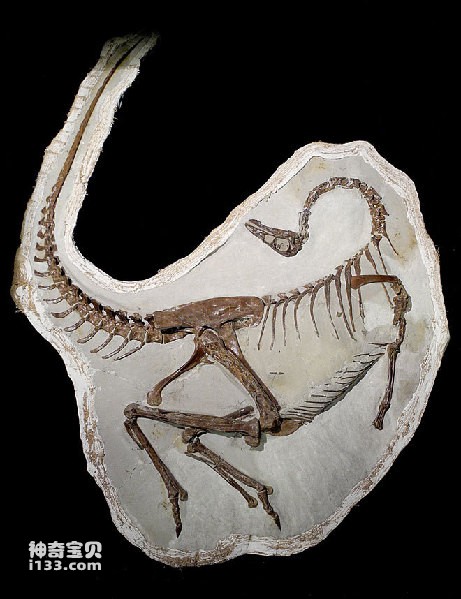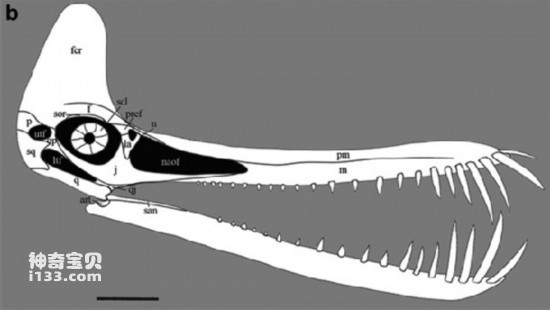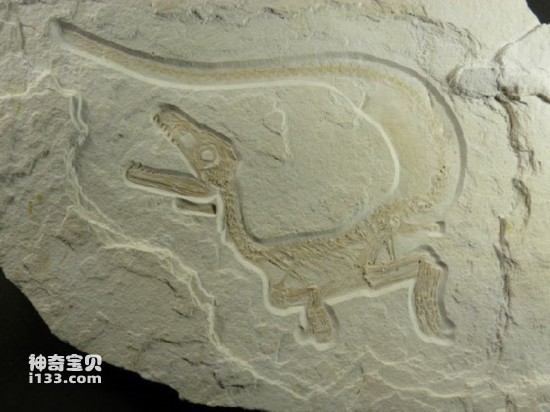
1. Dinosaurs also wooed by wagging their tails. Scientists came to this conclusion after studying small flightless dinosaurs, modern birds and reptiles. Oviraptorosaurs had strong, soft tails with colorful feathers that they could show off. "Such a tail is perfect for showing off their feathers," said Scott Pearsons, author of the paper.

2. The origin of winged flight has always been a hot topic of discussion in the paleontological community. According to a 2012 research paper published in Science, dinosaurs may have evolved wings and feathers earlier than previously thought. In a detailed study of Edmonton Ornithomimosaurus fossils, scientists found wing-like forelimbs and hundreds of filament-like marks that suggested they had feathers.

3. The fossil record of the dinosaur group to which Ornithomimus belongs is millions of years older than Maniraptor. This invention suggests that wings and feathers appeared earlier than previously thought. But Ornithomimus was not a flying dinosaur. Researchers estimate that they weighed around 150 kilograms, and their wings may have served other functions, such as courtship or hatching young.

4. The African Pachygnathus has a short parrot-like beak and long teeth, like scissors that can sharpen themselves. It is one of the most advanced herbivorous dinosaurs discovered so far. This dinosaur, smaller than a domestic cat, may have been covered in porcupine-like bristles and may have used its fangs for self-defense and to fight rivals in courtship.

5. The scientific name of Acrotholus audeti is "Acrotholus audeti". It is the oldest bone-crested dinosaur discovered in North America and may also be the oldest bone-crested dinosaur in the world. Scientists confirmed the dinosaur's existence based on two skulls found in southern Alberta, Canada.

6. The skull of Athosaurus ostriches is 10 centimeters thick. Scientists describe the new species this week in the journal Nature Communications. They pointed out that this discovery means that more populations of small herbivorous dinosaurs may be discovered in the future.

7. Being a dinosaur does not mean that you will not be hunted by any other animals. In the Mesozoic Era, dinosaurs were not only hunted by other dinosaurs, but also killed by crocodyliforms. These modern crocodile relatives sometimes preyed on young dinosaurs, according to research by Clint Boyd of the Institute of Mines in South Dakota and colleagues.

8. Although Nyasasaurus is not the oldest dinosaur, based on an upper arm bone and six vertebrae fossils discovered in Tanzania in the 1930s, scientists believe that Nyasasaurus was about the same size as a Labrador retriever. But the tail is longer. Nyasasaurus lived in the southern region of Pangea about 243 million years ago, predating all other known dinosaurs by at least 10 million years.

9. Hunter Ghost Dragon is a carnivorous pterosaur that lived 120 million years ago with a wingspan of up to 3 meters. In China, scientists have discovered the fossilized skull of this awe-inspiring flying animal. They pointed out in a paper published in the journal Nature in 2012 that the end of the hunter's beak had a complex arrangement of teeth, which may have been used for fishing.

10. It should be pointed out that pterosaurs are not dinosaurs in the true sense. However, due to its unique characteristics, the editors of Wired magazine listed it among the top ten recent discoveries.

11. Spinosaurus stetris weighed about 2 tons. The fossil of this dinosaur was discovered in 1916 by a father and son fossil collectors. It has been kept in the Natural History Museum in London and has been ignored for decades. Eventually, paleontologists realized the value of the fossils and cleaned them up for study. In a research paper published in 2012, they officially named the horned dinosaur.

12. The scientific name of Sciurimimus albersdoerferi is "Sciurimimus albersdoerferi". It has feathers and is an ancient branch of the dinosaur family tree. The discovery means feathers may have been more common in the dinosaur family than most scientists expected.

13. In October 2012, Canadian scientists determined that a newly discovered horned dinosaur, Xenoceratops foremostensis, lived 80 million years ago, earlier than most horned dinosaurs including Triceratops. They are estimated to be up to 20 feet (about 6 meters) long and weigh about 2 tons. They have parrot-like beaks and feed on plants.
animal tags:
We created this article in conjunction with AI technology, then made sure it was fact-checked and edited by a Animals Top editor.